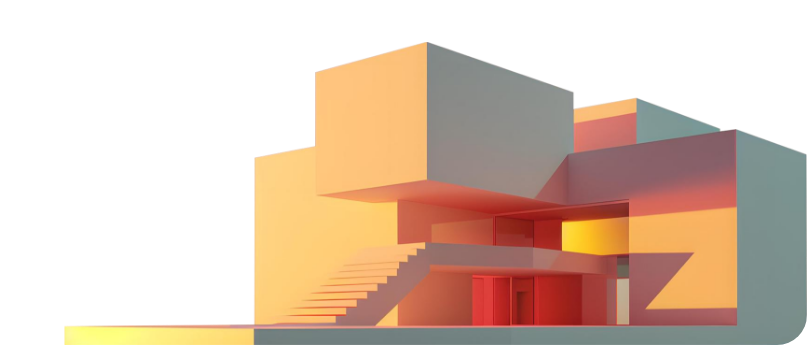 Rahul Dogra
Rahul DograFrom Concept to Construction: Stages of Architectural Design Process
 Rahul Dogra
Rahul Dogra
Send Us Your Requirement
The architecture and construction industry is a growing sector of the global economy, considering technological advancement and newer approaches. The complex process of constructing any infrastructure encompasses multiple stages, processes, designs, concepts, and many more that make the entire project successful. As a matter of fact, design is one of the vital processes that demands acute attention, concepts, efficiency, and accuracy to build an impressive design.
Knowing that the design process matters in any construction project, architectural skills should be prioritized, and step-by-step methods must be adhered to for professional competence. Moreover, skipping any architectural design stage significantly impacts the project concept’s outcome. As a result, it becomes important to follow the stages in the pre-construction stage for success and fruitful outcomes.
The architectural design process isn’t just a process but a foundation of construction and is also known as the bedrock of project management. Though lengthy, it brings cherry-crust outcomes from inception to completion of any project. As the construction project unfolds, many external, internal, regulatory, and other additional factors may significantly impact it.
Elevate Construction Project with Accurate Architectural Design Process
Get in Touch
In such cases, architectural construction documentation serves as a guide for construction projects to be successfully completed as per the design and concepts. Hence, this also brings the importance of the architectural design process if it is catered to with zero errors and accuracy. To get effective outcomes and enhance the results while following the design procedure meticulously, architectural design services play a pivotal role for AEC professionals.
Often, architectural design services are neglected, which impacts the overall outcomes of infrastructure creation. As a matter of fact, building any facility is a long and time-consuming process that requires breaking down the phases to organize the multi-stage process. With the help of an architectural layout plan, the ideas come to reality and bring effective results. For better understanding and clarity, let’s explore what is architectural design and an in-depth understanding of the process.
What is the Architectural Design Process?
In the field of architecture and the construction process, every stage and step is important as each plays a different role in achieving the collective outcome of project success. No procedure can be neglected in the construction process. Keeping this in mind, architectural design services play a crucial role in the initial stage of construction. In simple terms, architectural design is defined as a process of creating plans, specifications, and other components for the construction of infrastructure projects.
It typically entails different stages of conceptualizing, drawing, modeling, and specifying materials and systems in the construction project. As a matter of fact, an architectural layout plan serves the goal of creating functional, safe, and sustainable infrastructure that encompasses design requirements. This also brings compelling advantages to the entire construction project and helps AEC professionals curate the project wisely. The following are the major benefits;
Benefits of Architectural Design Services
Saves time
Ensures staying within budget
Scope of creativity
Promotes functionality
Effective utilization of space
Reduced operational cost
Adhering to compliances, codes, and regulations
With the benefits mentioned above, architectural design services are structured into various types, the following are;
- 3D floor & roof plan design
- 3D concept design
- Architectural interior design and exterior design
- Furniture product design
- Landscape design & drafting
- Architectural layout plan
These various types of architectural layout plans require accuracy and efficiency. However, a step-by-step process helps make the project successful and ensures that the concept approach is delivered in the construction project. Let’s explore the process in-depth and understand how each step is vital.
Significant Step-by-Step Process of Architectural Design
- Step 1: Pre-design phase: The first step in architectural design is the pre-design phase. It typically encompasses defining project requirements, scope of work, objectives, and more. This initial step is important for understanding the construction project and is a stage where professionals can gather information.
- Step 2: Schematic design phase: This second step is technical as it demands developing and following the conceptual design of floor plans, roof plans, and more. The schematic design phase requires sheer attention to detail and accuracy to be error-free, making project completion easier.
- Step 3: Design development phase: Once the schematic design phase is completed, the third step is the architectural design development phase. This step involves refining the design more precisely and curating detailed drawings, specifications, and dimensions for clear communication and understanding. Moreover, this design development stage helps estimate project costs, enhancing overall efficiency.
- Step 4: Construction documentation phase: The fourth step holds the most pivotal role as it is used before and after the project completion. Once the design development procedure is completed, the next big thing is to create construction drawings and specify the materials to be used. These steps require the intervention of engineers and other AEC professionals to prepare the paperwork. A complete set of construction documentation is also part of bidding the project.
- Step 5: Bidding and contracting: The next crucial step is project contracting. Bidding the project with the right details and amount plays a major role in success. Bidding the project is essential in architectural design services. To begin with, start selecting an accurate contractor and reviewing all the proposals for accurate details. This helps to filter out the best and ensure the contractor secures the required approvals and permits.
- Step 6: Construction stage: Once the contract is given to the potential contractor, the next and last phase is the beginning of construction. This begins with an architectural layout plan. This is important as it is the foundation of the entire project.
- Step 7: Post-construction phase: The post-construction phase is where the final inspection of the infrastructure is done. This stage also requires cross-verification of architectural construction documentation.
These are the major stages of architectural design services that ensure the overall project success. However, in today’s world, AEC professionals stress the efficient use of green energy and incorporate sustainable design principles. This is achieved through the use of cutting-edge technology, such as building information modeling.
In Conclusion
The architectural design services are the most important and hold an acute role in the construction process. They help curate the project according to the design, concepts, regulations, and specifications given by the client. However, the above-mentioned steps require meticulous attention, accuracy, and the latest technology. Therefore, it is advisable to outsource architectural design for accurate outcomes without diverting the focus. Outsourcing can offer various benefits and ensure the project is delivered on time with accuracy, efficiency, and desired specifications. UniquesCADD is the best BIM services provider, offering architectural design by a team of professionals and utilizing cutting-edge technology.






